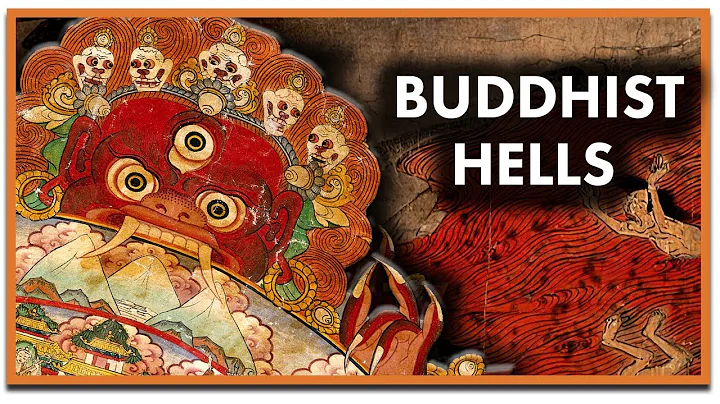In 1578 AD, Altan Khan of Mongolia gave the title of "Dalai Lama" to the owner of the Drepung Monastery, and since then the birth of the first "Dalai" in history. By 1653, the Emperor of Shunzhi adopted this title, and the "Dalai Lama" became the exclusive to the Dalai Lama system.
However, we often see another title in film and television dramas, literary works and in reality, Panchen Lama. For example, the current Panchen Lama we all know is the 11th Panchen Lama Erdeni Quejijeb.
So do "Panchen" and "Dalai" mean the same? What is the relationship between the two and why are there two different titles?

Time went back to the mid-7th century, when Tibet was ruled by Songtsen Gampo . This ruler had an extraordinary political mind. Under his management, Tibet developed rapidly and once reached the point where it could fight against the prosperous Tang Dynasty.
Tang Dynasty In order to reduce the conflict with Tibet, the final decision was made to marry each other, and Princess Wencheng joined Tibet in this way. There is a point here. Although Buddhism had been introduced to Tibet before Princess Wencheng married, people did not believe it.
, after Princess Wencheng and Nepal 's 's 's 's 's marching, they influenced Songtsen Gampo together, and Buddhism gradually became recognized by the people. Songtsen Gampo discovered that believing in Buddhism can calm people and reduce a lot of resentment, which is very helpful to his rule. For this reason, he sent people to India to learn scriptures, and then encouraged the people to study and comprehend Buddhism.
Since then, Buddhism has officially taken root in Tibet.

However, Tibetan culture is relatively special. After Buddhism was introduced and Tibetan culture was integrated, a more unique Tibetan Buddhism gradually formed. As the influence continues to expand, Tibetan Buddhism has also appeared in surrounding areas such as Qinghai and Sichuan.
The prosperity of anything is inseparable from the contribution of leaders, and the same is true for Tibetan Buddhism. In 1357 AD, the founding leader of Tibetan Buddhism, Tsongkhapa, , was born.
This person is very smart and kind-hearted, and he was already quite famous when he was a teenager. His style of helping others and saving others is also praised by the world. On this basis, he created the Gelug School that influenced Tibetan Buddhism for nearly a thousand years.
However, no matter how high a person is, he cannot complete his grand achievements independently. Now, Tsongkhapa's two apprentices, Kjoj and Gentun Juba, became his right-hand assistants.

However, what Tsongkhapa did not expect was that his two disciples were even more outstanding, not only developed the Gelug Sect to its peak, but also created the title of "Living Buddha".
However, the brothers did not compete for each other for this. On the contrary, they each developed and managed each other, and eventually formed the "Panchen Lama" and "Dalai Lama" that are well-known today. "Panchen Lama" comes from Tibetan, meaning "master". "Dalai" is Mongolian, meaning "the sea".
In the subsequent development, the Panchen Lama was far away from the secular world, while the Dalai Lama controlled politics and religion. Therefore, the Dalai Lama managed the former Tibetan, which was equivalent to 90% of the population of Tibet. The Panchen Lama managed the latter Tibetan, and only led to 10% of the population.

Speaking of this, the first topic I threw out seems to have answers. The two titles are two systems, and the meanings of the titles are also different, which does not mean the same.
said that, the first topic I threw out before seems to have answers. The two titles are two systems, and the meanings of the titles are also different, and they do not mean the same.
said this. 0 Judging from these materials, although the meanings of the two titles are different, their inner meanings are the same. actually they are both the "living Buddha" of the reincarnation of the spiritual child.
As for who is the higher status between them, there are some statements. As mentioned earlier, although the two systems have the same clan and the same origin, their subsequent development directions are different, which means that their status is also high and low.

From the perspective of Tibet's management system, the Dalai Lama who controls politics and religion has a much higher status, so it has a practical reputation in the Buddhist community. Therefore, we see that the Dalai Lama generally lives in the Potala Palace. Because the Potala Palace is an office place where politics and religion are united.
But if we look at the sect, the Panchen Lama is higher than the Dalai Lama.The reason is very simple. According to the origin of both sides, the Panchen Lama was the incarnation of Amitabha Buddha, while the Dalai Lama was only the incarnation of Guanyin .
If you look at it from a Buddhist perspective alone, the status of the Panchen Lama is obviously much higher.

In fact, no matter what relationship they have, who has a higher status, what is commendable is that they can coexist peacefully between the two. There are only some entanglements in a few periods, and they live in harmony most of the time.
In addition, although the development directions of the two are different, they both maintain their original intentions. Even the two systems work together to closely link Tibet's nation, thoughts and culture, which greatly promotes the stable development of Tibet.
So this is enough. Compared with the struggle between various sects in India, open and secretly, Tibetan Buddhism is simply a paradise. It is no wonder that Buddhists from all over the world travel thousands of miles to Tibet to worship.
Reference: "Old Book of Tang"







![[English] Who Am I - Lecture 1 - Ven. Guan Cheng - DayDayNews](https://i.ytimg.com/vi/KU0fUs2It5o/hq720.jpg?sqp=-oaymwEcCNAFEJQDSFXyq4qpAw4IARUAAIhCGAFwAcABBg==&rs=AOn4CLDFpQUN_QwRfC7bmP4sUadq-RcYdg)
![A Moving Masterpiece 清明上河图 [English narration] - DayDayNews](https://i.ytimg.com/vi/kxff-4GktOI/hqdefault.jpg?sqp=-oaymwEcCOADEI4CSFXyq4qpAw4IARUAAIhCGAFwAcABBg==&rs=AOn4CLBtHGLeUpJNCYDJYnZTuISQ1N5Vag)


